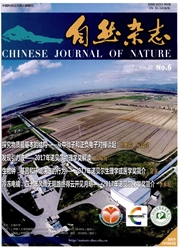

 中文摘要:
中文摘要:
青藏高原隆升是地球历史上一次重大的地质事件,青藏高原的出现对亚洲气候与环境产生了划时代的影响。过去的几十年来,中外学者利用各种气候数值模式模拟研究了青藏高原隆升的气候环境效应,极大地加深了我们对亚洲季风变迁和亚洲内陆干旱化机制的理解。近年来“高原隆升-气候响应”研究的一个重要进展是认识到亚洲区域气候响应与青藏高原隆升的形式密切相关。本文对此进行了概括介绍,重点通过一系列分区域隆升的数值模拟试验的综合分析,指出青藏高原北部隆升对东亚季风变迁及亚洲内陆干旱气候演化具有重要影响,其最突出的特征表现为随高原北部隆升东亚夏季风和季风雨区向北扩展,内陆干旱区和大气粉尘含量及沉积范围增加。这些模拟研究结果对东亚古环境研究具有良好的启示,并由此提出了许多新的科学问题。
 英文摘要:
英文摘要:
As a major geological event in the Earth's history, the uplift of the Tibetan Plateau on the Asian climate and environment had a defining influence. During the past decades, many scholars from China and abroad have studied climatic and environmental effects of the plateau uplift by a variety of climate numerical models. These modeling studies have greatly deepened our understanding of mechanisms on the evolutions of Asian monsoon and Asian interior aridity. In recent researches on "plateau uplift- climate response", an important progress is recognizing that there exists a close relationship between the Asian regional climate response and the form of the Tibetan Plateau uplift. This paper conducts a general introduction, focusing on a comprehensive analysis of a series of sub-regional uplift simulations. It is pointed that the uplift of the northern Tibetan Plateau produced significant impacts on the evolution of the East Asian monsoon and Asian inland arid climates, with northward shifts of East Asian summer monsoon circulation and rainfall, and expansions or enhancements in arid regions, atmospheric dust loading and sedimentary areas as the most prominent features. A great deal of enlightenment is gained from these modeling results for the paleo-environmental researches of East Asia and thus many new scientific questions are raised.
 同期刊论文项目
同期刊论文项目
 同项目期刊论文
同项目期刊论文
 期刊信息
期刊信息
